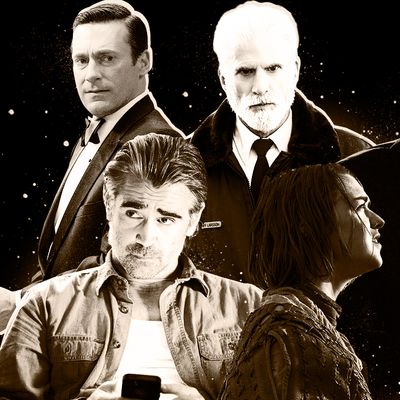
The word cinematic gets thrown around a lot in relation to ambitious TV. You hear that a particular show is very cinematic, or that a certain scene was cinematic, or that the direction was cinematic. But what does that word mean, really?
I think I know what it means to some people: Big. Exciting. Expensive-looking. Not like your usual cheap-and-functional-looking television show, where, to paraphrase a crack once made by The New Yorker’s Richard Brody, storytelling and characterization are so word-dependent, and so largely uninterested in thinking visually, that the people who make the shows might as well have saved themselves the expense of making an actual program and just emailed viewers PDFs of the script.
But in truth, it means something much more subtle. Vulture video editor Chris Wade and I collaborated on this video, which attempts a clear definition of cinematic television:
We’ve tried to go beyond the usual vague, hyperbolic use of the adjective and suggest what is truly cinematic about well-directed TV — and well-directed films, for that matter. It’s a matter of judgment and discernment, of having a vision as well as a plan, making particular choices for particular reasons, and letting those choices guide how a scene is shot. Who is the scene about? What is the scene about? And how can the direction (and editing and music and cinematography) reinforce this, overtly or subtly, in ways that go beyond simply pointing lots of cameras at a room full of actors and cutting among them as they talk?
As examples of superior TV direction — genuinely cinematic TV direction — we’ve zeroed in on scenes from Fargo, True Detective, and The Leftovers, as well as numerous scenes and moments from The Knick, which is almost certainly the most imaginatively directed drama on TV at the moment. We hope you enjoy.




